
How to Plan Your Trip to the Dordogne
Beynac, Dordogne, France Photo by Tripscholars
This post may contain affiliate links which means Trip Scholars may make a small commission (at no extra cost to you) if you make a purchase. As an Amazon Associate I earn from qualifying purchases. Read more here. Thanks for helping us keep the lights on!
Planning your trip to the Dordogne? Wondering what to learn beforehand and whether it is worth your time? We have gathered the best resources together that are guaranteed to enhance your trip.
Is the Dordogne a perfect travel destination? It just may be! The area boasts ten of France’s prestigious Les Plus Beaux Villages (The Most Beautiful Villages Award), is a UNESCO biosphere reserve, has two UNESCO World Heritage Sites, and has been the fairy tale setting for many movies and shows. It is an enchanting delight for all travelers, but with a little extra time it can be an even more deeply rewarding trip.
Table of Contents
Map Your Trip to the Dordogne
Why Plan Your Trip to the Dordogne
The Department of the Dordogne in Aquitaine, just east of Bordeaux and surrounding the idyllic Dordogne River, is an ideal travel destination. The perfectly preserved medieval villages tucked along the river’s shores and into the surrounding countryside still enchant travelers up their winding cobblestone lanes. Foodies delight in delectables from farmers’ markets, Michelin Star restaurants— and everything in between. Many villages surround dramatic castles that can still be toured today.
The river has carved its pathway through picturesque limestone often sculpting dramatic cliffs on either side. Walnut groves give way to sunflower fields and tree lined forests that host inviting campgrounds. And permeating the whole area are limestone caves that served as the canvas of talented Paleolithic artists. Cro-Magnon, who arrived in the area some 40,000 years ago, was named after the land owner, Magnon where their bones were first discovered. Just up the road lies Lascaux, often called the Sistine Chapel of Prehistory. Scattered among these sites are exciting Neanderthal archeological finds dating back 300,000-400,000 years.
If you are dreaming of your own trip to the Dordogne, we have gathered many of the best resources you can enjoy before you go. You will understand more of your experiences on your trip and will see things in a broader context. And your trip can begin now, right from home! Many visitors will only be here for days or weeks, but if you use these resources from home, you can enjoy the area for years. We have books you can start reading today and movies you can watch tonight so that you can extend your trip, often without spending a dime. Read on to discover our best suggestions to enhance your trip!
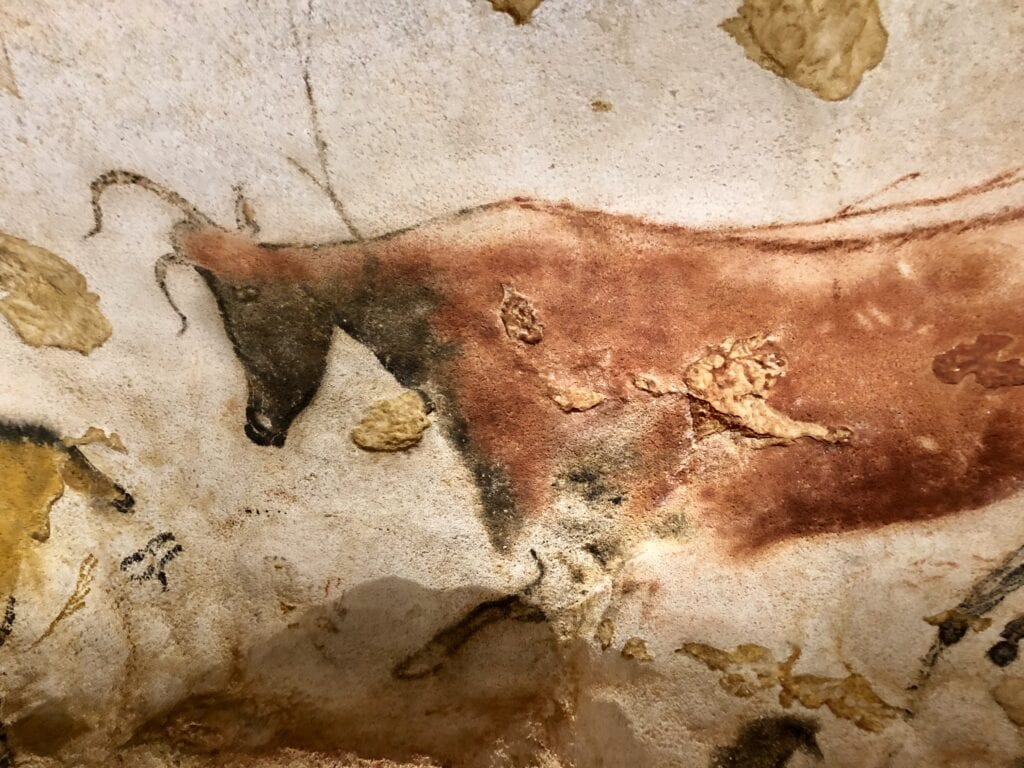
Get an Overview of Your Trip to the Dordogne
One of the first steps in planning your trip is to get a broad overview. The department roughly corresponds to the natural region of the Periogord, which is another way you can look for information. Rick Steves loves this area and highlights it in both this video and his France guidebook. His 2017 even edition even showcased the Dordogne on its cover. DK Eyewitness Travel also offers the Dordogne, Bordeaux, and the Southwest Coast guidebook that includes maps, attraction information, and historical timelines. These will whet your appetite and help to steer your studies. There is a lot to enjoy, and these will help you narrow it down.
Early Man in the Dordogne
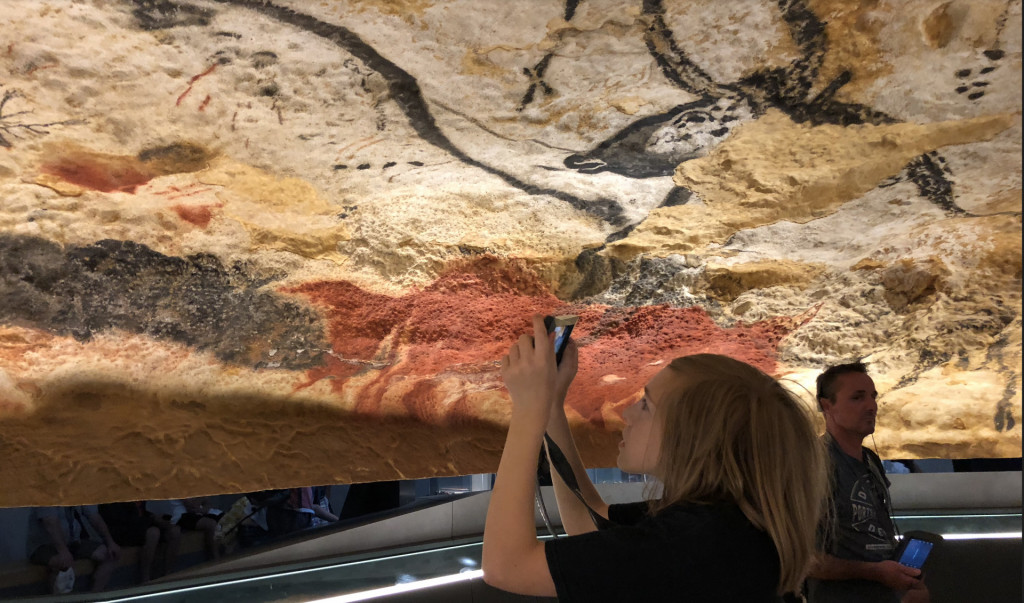
The Vezere Valley contains a jaw dropping 150+ prehistoric sites, 25 of which are decorated. The sites date from 400,000 – 10,000 years ago and span an area approximately 30km by 40km (18-25 miles). This creates a rich density of sites and artifacts, some of which are the among the best representations of prehistoric art in the world. It was recognized as a UNESCO World Heritage Site in 1979 and the idyllic town of Les Eyzies-de-Tayac is known as the ”Capital of Prehistory.”
A visit to Lascaux is highly recommended. The site was discovered in 1940 when a teenager’s dog fell in a nearby hole and he returned with his friends to explore more. I can only imagine what a heart-stopping thrill it must have been for them to discover one of the greatest finds in history! It quickly became immensely popular with scientists and tourists alike.
Tragically, changes in the previously undisturbed ecosystem caused deterioration of the paintings and in 1963, the cave was closed off to visitors. But multiple replicas have been made and the current iteration, Lascaux IV, allows visitors both a recreated experience (down to every brush stoke) in addition to a high-tech, hands-on, multimedia experience. This documentary is a helpful way to learn more about Lascaux.
Perhaps even more inspiring than visiting the copy of this masterpiece, is seeing some of the actual artwork made in the nearby caves. The most famous in the valley are Font de Gaume, Combarelles, Cap Blanc, and Rouffingnac. Pech-Merle is just a little further out, but definitely worth a visit.
To learn more about including UNESCO World Heritage Sites into your travels, read our article, Your Guide to Visiting The World’s Most Valuable Places.
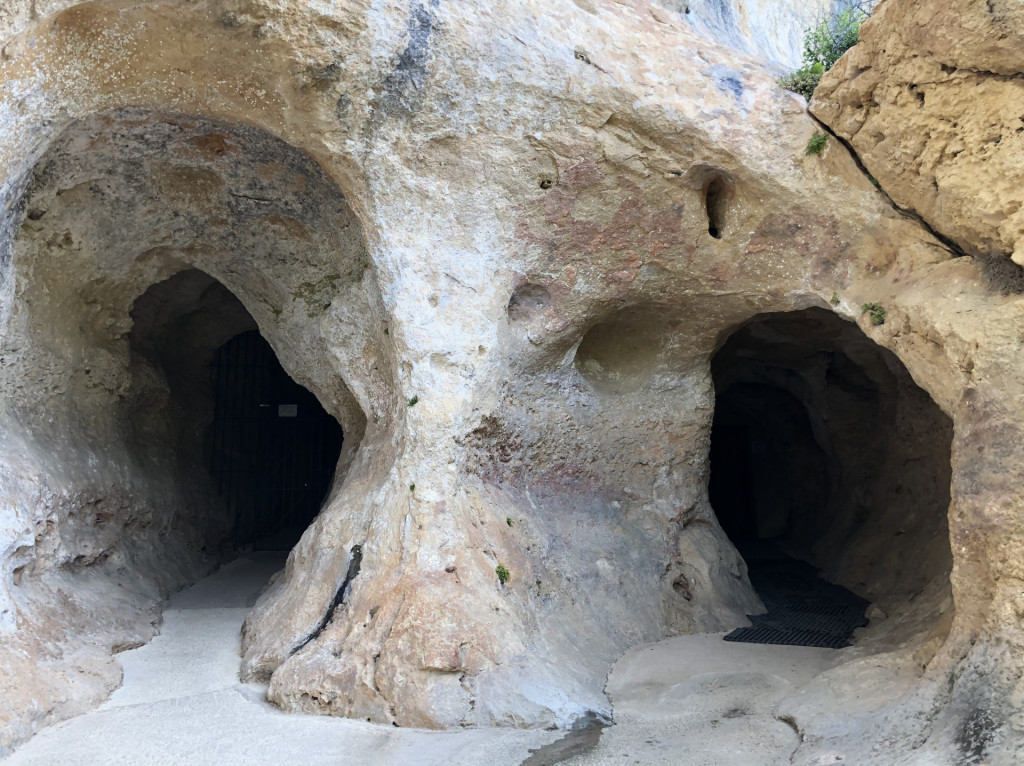
Learn More About Early Man to Plan your Trip to the Dordogne
My top non-fiction book recommendation to better understand the artwork of the area is Stepping-Stones: A Journey Through the Ice Age Caves of the Dordogne by Christine Desdemaines-Hugon. Christine began as an artist herself. After moving to the Dordogne her family discovered Neanderthal artifacts right on their farm! She became fascinated with the archaeology of the region, went on to get multiple degrees, and become an expert in the Ice Age cave art and portable art forms of the Dordogne.
She has now been leading tours of the caves for over thirty years and, with her background as an artist, she brings a unique eye and understanding to these astounding creations. I especially appreciate that she cautions against applying our modern interpretations to the images and symbols we marvel at.
She shares her reverence and awe of the Paleolithic artwork in her book, and I found it extraordinarily moving. So much so, that we hired her to be our guide as my birthday gift that year. It was worth every penny! Unless you are moving to the valley (as we often dream of doing ourselves), you will have to narrow down the actual caves you will be visiting. Her book will help you do so.
Getting tickets can be an artform of its own. The website Archaeology Travels is the most useful with up-to-date information (along with a wealth of other resources). If you book with Christine, she can also help to arrange your tickets.
The Vezere Valley is so rich in artifacts that discoveries here have named three major prehistoric periods. To better understand Cro-Magnon man and Neanderthals, I recommend my favorite coffee table book, Origins Human Evolution Revealed. It has provided countless hours of fasciation and wonder.
The best-selling prehistoric fiction series (and movie) Clan of the Cave Bear by Jean M Auel will give a curious mind much to ponder about the early people of the area. The last book of six in the series is aptly named, The Land of Painted Caves and is primarily set in the Dordogne itself!
Those especially interested in cave art will enjoy The Cave of Forgotten Dreams by Werner Herzog. It is filmed in Chauvet Cave, a six-hour drive from the Dordogne, and is an astoundingly well-preserved example of the artwork of the people who were also living in the Dordogne at the time.
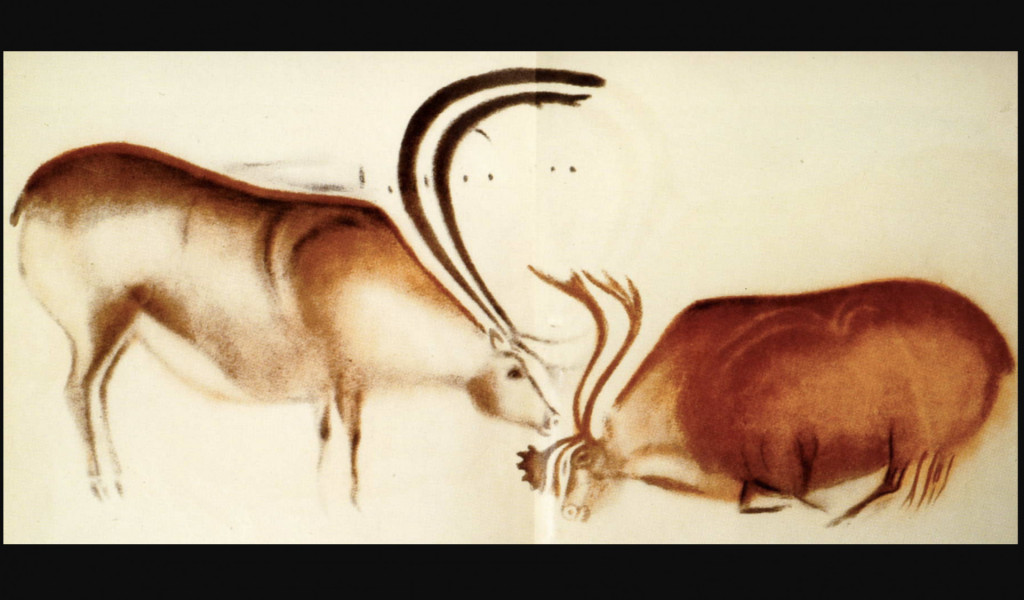
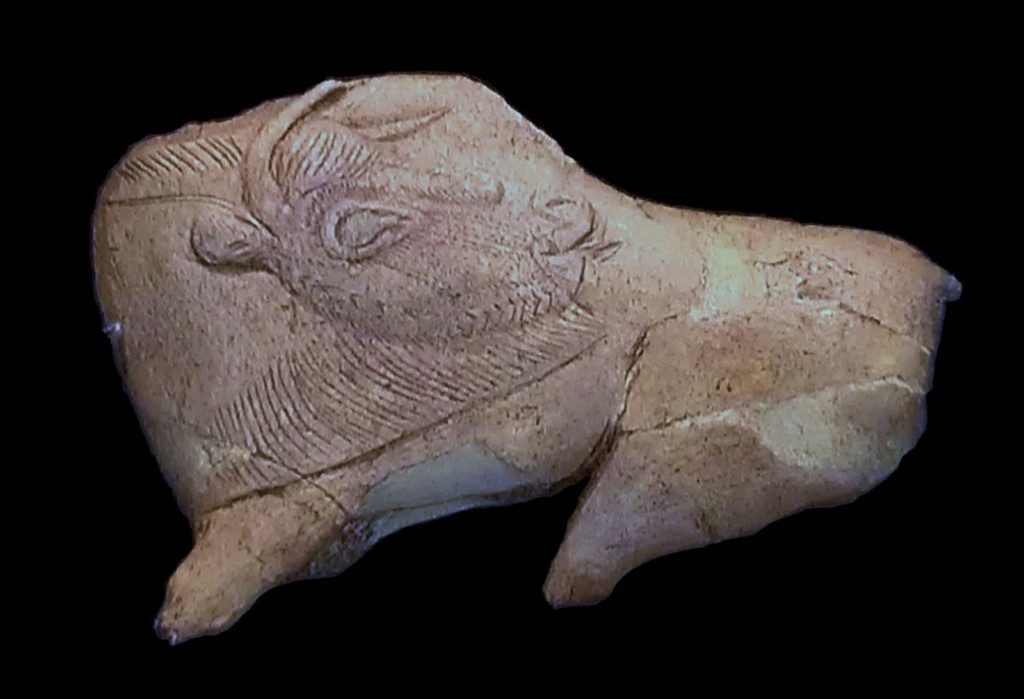
All of this research will help to make your time in the caves and the not-to-miss National Museum of Prehistory even more profound. I was moved to tears of awe multiple times a day as we explored the wonders created by our distant relatives. The universality of human experience is undeniable in the caves and museum. Seeing the tender nuzzling of the deer in Font de Gaum; the exquisite detail and reverential appreciation of the calf made from carved antler in the museum; the profound awe and overwhelming talent in Lascaux; or the extraordinarily moving human face in Bernifal— these were some of the peak experiences of my life. It is my hope that they can be just as profound for you and that these resources help to create ample context.
Explore the History to plan Your Trip to the Dordogne
The fertile valleys, easy access to the river, and naturally made shelters invited ongoing habitation and created a rich history. To dive in through living history opportunities on your trip, visit the Parc Archeologique, a reconstruction of a Bronze Age settlement and La Roque-Saint-Cristophe, a reconstruction of a settlement from the Middle Ages.
Fairytale Castles of the Dordogne
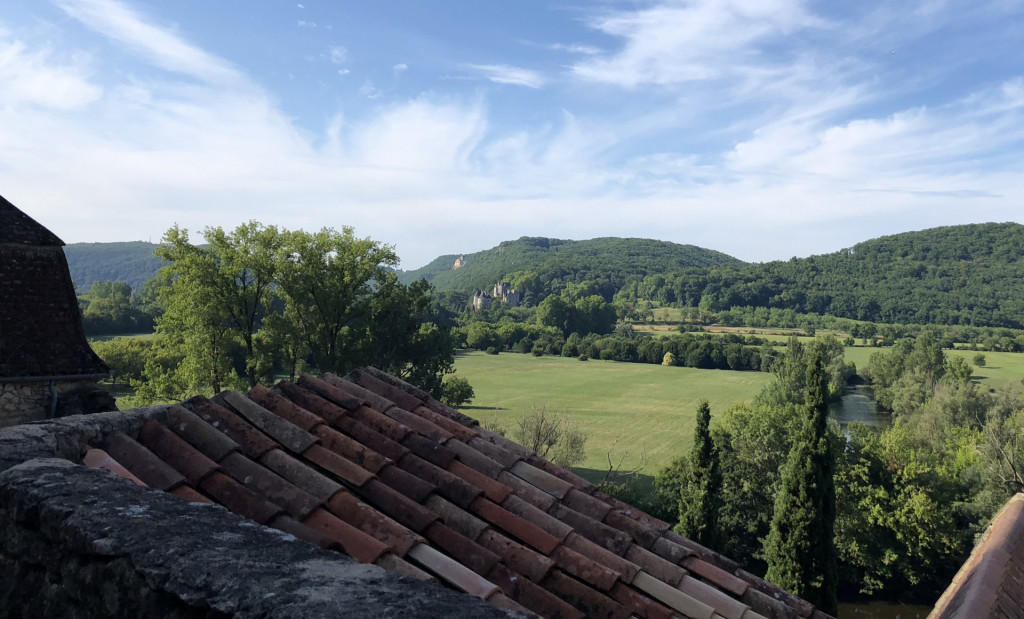
Highlights of your trip will likely include stops at the Chateau de Beynac and its rival, Chateau de Castelnaud. Both castles played important roles in the Hundred Years’ War. Chateau de Beynac is perched dramatically 500 feet above the Dordogne River and was one of the four seats of the Périgord’s baronies. For a time, it was home to Richard the Lionheart and flipped from English to French rule a few times during the war. Take advantage of the live reenactments and tours when you visit. It lies across the river from Castelnaud where the French and English kept a close watch on each other. Among the sites at Castelnaud are a war museum and a unique multimedia diorama re-enacting a major battle of the Hundred Years’ War that will delight both children and adults.
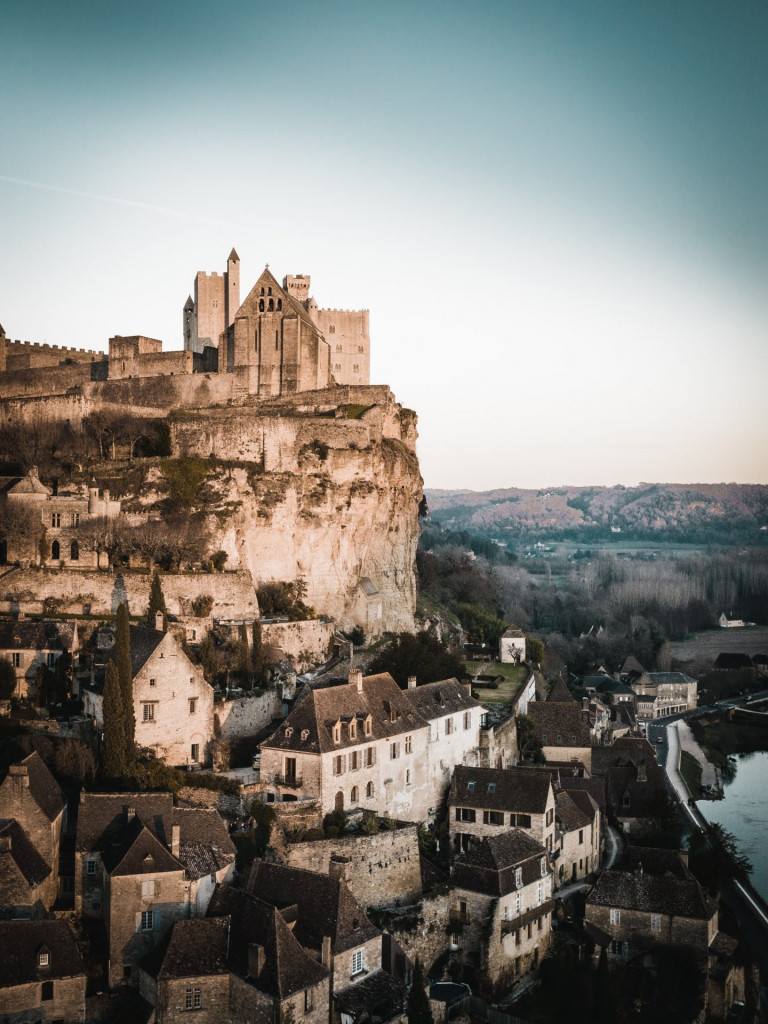
To appreciate your visit more deeply, you can learn more about the Hundred Years’ War in the scholarly interpretation, The Hundred Years War: A People’s History. Author David Green looks at the war from a wide range of perspectives and explains the broader social changes that were intertwined with it.
If you are looking for a more lighthearted, but still helpful interpretation watch Extra Credit’s animated series on the the war.
To learn more about castles, kids (of all ages) will enjoy David Macaulay’s book and show, Castles. Even though the castle depicted isn’t in France, it is still a valuable resource. Macaulay employs his skilled illustration style and deep knowledge of history and architecture to create a compelling understanding of castles.
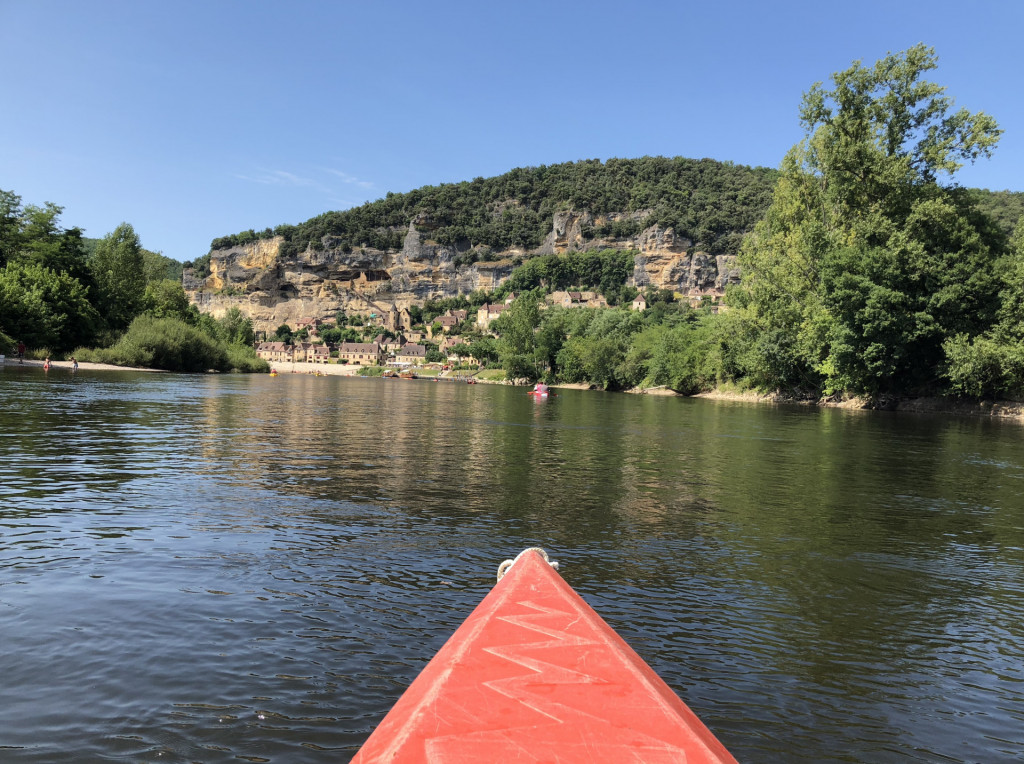
The complicated relationship between the French and English ruling families which caused the disputes that launched the war, can in some ways, be traced back to the mother of Richard the Lionheart, Elenore of Aquitaine (~1122-1204). She is probably the most famous historical figure from the Aquitaine.
Elenore was one of the richest and most powerful rulers in the High Middle Ages. As a teenager she inherited Aquitaine (including the Dordogne), which encompassed about one-third of France and married the heir to the French throne. After becoming queen consort of Louis VII, the marriage was eventually annulled. She then married Henry II, who become the King of England, making her the queen of England. She brought Aquitaine with her into this marriage and later left it to her sons. Although not specific to the Dordogne, the movie (or play), The Lion in Winter is a fictional portrayal of her later years. The 1968 version staring Katherine Hepburn in the riveting, tragic yet hilarious role of Eleanor, is a great watch.
Cyrano de Bergerac
If you are visiting the town of Bergerac, you’ll likely see the two statues erected in honor of one of their claims to fame, Savinien Cyrano de Bergerac (1619–55). The actual historical figure is thought to have only stayed a few nights in the charming town (if at all), but he inspired Edmond Rostand’s famous character.
As a traveler, you can anticipate your trip by reading the play or watching one of the many screen adaptations like, the award winning 1990 French version starring Gérard Depardieu.
Josephine Baker and Château des Milandes
Whether or not you are visiting the lovely Château des Milandes you will want to learn more about Josephine Baker (1906-1975). She was the most famous owner of this beautiful chateau and garden. Josephine was a civil rights activist, French Resistance agent, and talented entertainer who raised her family here.
She and her husband adopted 12 children of different nationalities and created their “Village of the World, Capital of Universal Fraternity” at the chateau to show that children of different nationalities and religions could live together in peace.
You can watch her silent film Siren of the Tropics in which she was the first black woman to star in a major motion picture. Be sure to watch the very moving, The Josephine Baker Story to learn more about her life.
Then, when you visit the castle and gardens, you’ll be able to appreciate it even more.

Food and Wine of the Dordogne
Many people visit the Dordogne for the food and wine alone! Enjoying them will be a highlight of your trip, and by investing a little extra time beforehand, you can appreciate them even more.
Saint Emilion is the second UNESCO World Heritage Site in the Dordogne. In 1999 it was the first vineyard in the world to receive this designation. According to UNESCO, the vineyard and villages of Saint-Émilion are “an outstanding example of an historic vineyard landscape that has survived intact”. Here is a short introductory video to get you started. A visit to your local well–stocked wine store can provide a thoughtful gift for your travel companions to enjoy in advance while you make trip plans.
Wine isn’t the only taste sensation famous in the region. Truffles, walnuts, strawberries, ceps, cheeses and more all take center stage as well. The documentary, After Winter, Spring is a thoughtful portrayal of small scale farmers in the Perigord trying to retain their ancestral ways.
An inspiring (and surprising) place for recipes of the region is the website Bruno, Chief of Police. This best-selling series is set in a fictional village in the Dordogne. The mystery-solving Bruno is also a fantastic chef and food and wine permeate the books. Go to the Bruno’s Kitchen section of the site for many local recipes and get started enjoying today. Much of what makes the food in this region so remarkable is its’s freshness so consider a visit to your local farmer’s market to pick up your ingredients if you are trying these recipes at home.
Learn Some French Before Your Trip to the Dordogne
Although the Dordogne is one of the most popular landing places for British ex-pats in France, we found that knowing a little French went far. My husband, whose French is much better than mine, helped stumped American tourists communicate with the helpful staff at the boulangerie. Without knowing some French, we wouldn’t have been able to interact much with our proprietor or guides on some of our tours. Our study from home allowed more enjoyable conversations and we learned more on our trip. It is always helpful to study language before traveling and it is a vital component in showing respect for the people in the country hosting you.
Tripscholars offers many language learning suggestions, from tutors to websites, in the language section of our Travel Resource Library. Check out our article on Language Learning for a lot of other terrific tips.
Movie Night in the Dordogne
The Dordogne is so enchanting that many movies and shows have been filmed here.
If you want to be swept away into the charm of the Dordogne through a lovely story enjoy Choloclat. Some scenes are filmed in Beynac and the traditional Gabares boats of the Dordogne river play a key role in the film. In the movie they are dressed up to host Johnny Depp and his band of river rats, but historically they helped with shipping goods from towns on the river down to the port in Bordeaux. You can even ride on one when you visit on your trip to view the castles and towns along the river. Be sure to have some good chocolate on hand to enjoy while you watch Judi Dench, Juliette Binoche, and the rest of this talented cast!
Many of the outdoor scenes in the 1977 classic, The Duelists were filmed in the village of Sarlat. The bucolic scenery, combined with the architecture from the Middle Ages and the Renaissance will have you wanting to jump on the plane to begin your trip now. The movie is based on the book by Joseph Conrad and is directed by Ridley Scott. A young Harvey Keitel, and younger Keith Carradine, are lieutenants in Napoleon’s army and become entangled in a relationship that spans decades. Their story plays out during Napoleon’s reign and demise giving us the added benefit of some interesting French history while we dream of our travels to the Dordogne.
For another dramatic interpretation of French history with some beautiful scenes filmed in the Dordogne, watch The Messenger, the Story of Joan of Arc. This movie has mixed reviews. Many don’t like it because of historical inaccuracies. Others because of a few scenes that are added purely for sensationalism and are pretty hard to watch (including the hard-to-shake opening of the film). I like historical fiction; it always inspires me to do a lot of extra research to find out what is accurate. The Messenger was no different and I loved seeing Chateau de Beynac and dreaming of our own trip there. Plus, it adds another layer of understanding to The Hundred Years’ War and powerful historic figure of Joan de Arc.
Everafter makes the most of the storybook scenery of the Dordogne. Most of this charming movie was filmed in the in the area, including filming at four different chateaus. Drew Barrymore stars as an independent, strong Cinderella in 16th Century France. With a PG rating, this is the best choice for families, but will be equally enjoyed by adults.
Planning Your Trip to the Dordogne
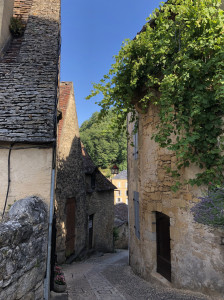
I hope you have found some useful resources to begin enjoying now as you dream of, and plan for, your own trip to the Dordogne. Just be careful, it might steal your heart and you’ll end up like us, imagining how you can live there someday! Lucky for us, we indulge in our dreams using the resources I’ve shared in this post.
Are you thinking of a trip to the Dordogne? Have you already been there? What resources did you enjoy? Please let us know in the comments. If you haven’t been, did anything catch your eye? I’d love to know in the comments below.




![The Land of Painted Caves [First Edition]](https://m.media-amazon.com/images/I/513gvhF6iJL._SL1250_.jpg)



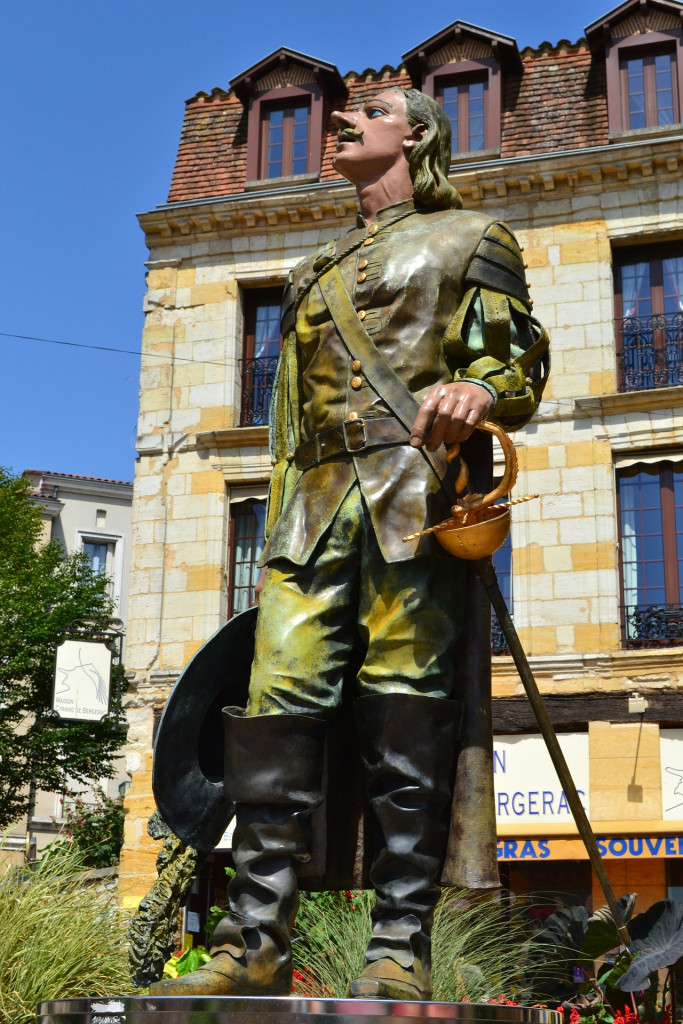

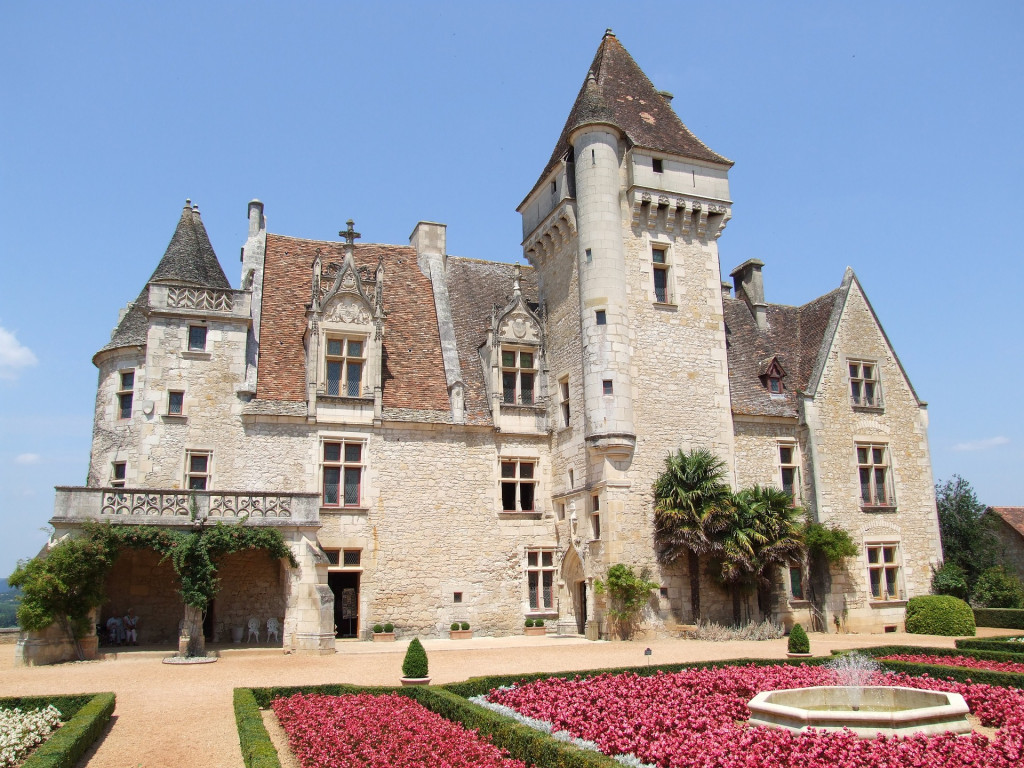








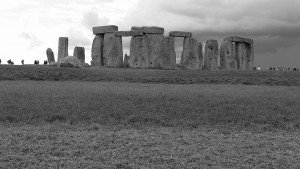


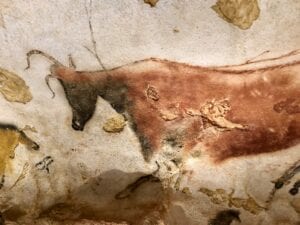
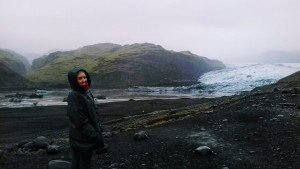




12 thoughts on “How To Plan Your Trip to the Dordogne”
What a comprehensive guide! Chocolat is a great film (and an even better book). I like how you’ve weaved in so much background research to make the trip better.
Thank you, I am so happy you found it useful! I haven’t read the book, thanks for the tip. 🙂
I had no idea the Dordogne was so beautiful! I love the idea of viewing the castles on the Dordogne from a kayak! Thanks for all of the great history and resources, it’s such a thorough post! Thanks for the great guide!
Kayaking the Dordogne is about as good as it gets, I think you would love it! I’m glad you found it helpful!
Have my flight booked for September! Pinning for then!
I am so happy for you! I can hardly imagine how much you will love it since you are a chef! I’m a vegetarian so I didn’t include some of the region’s dishes in the post. But all of the food we had there was delicious– super fresh and yummy. Plus the ambiance makes it all taste even better. Have a wonderful time!
WOW! Dordogne looks like such a beautiful region with so much interesting history. I can’t believe I’d never heard of it before, having traveled France a few times already. I would absolutely love to go to the Vezere Valley to visit some of it’s prehistoric sites. Great post, thank you for this travel inspo!
Thanks, Erin! You are in good company, it is not nearly as well known as many other regions in France. But once you start learning about it, you can’t wait to go– or go back! I hope you can visit soon. 🙂
I think I learned about this region of France at university but I can’t be sure. I would love to visit it though because of all of the historic sites it has all around it!
Yes the history (and prehistory!) is incredible, I think you would really enjoy it!
We’ll be in France in September! Looking forward to exploring this area!
I hope you get to go! As a chef, I think you will love the food– it is some of the best I’ve ever had!